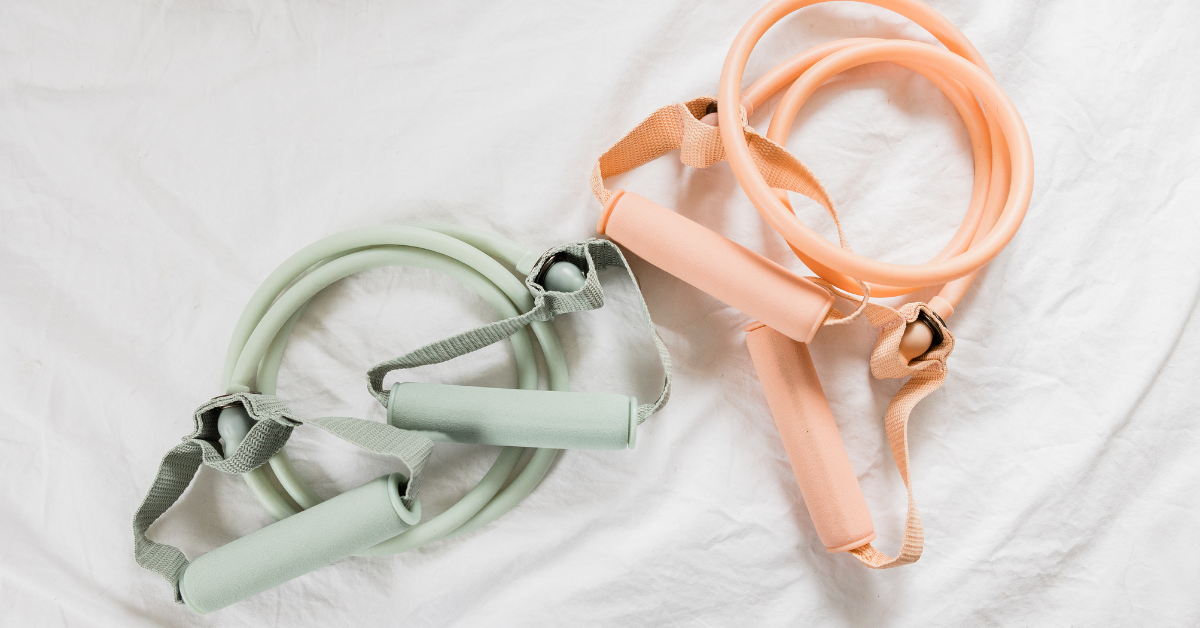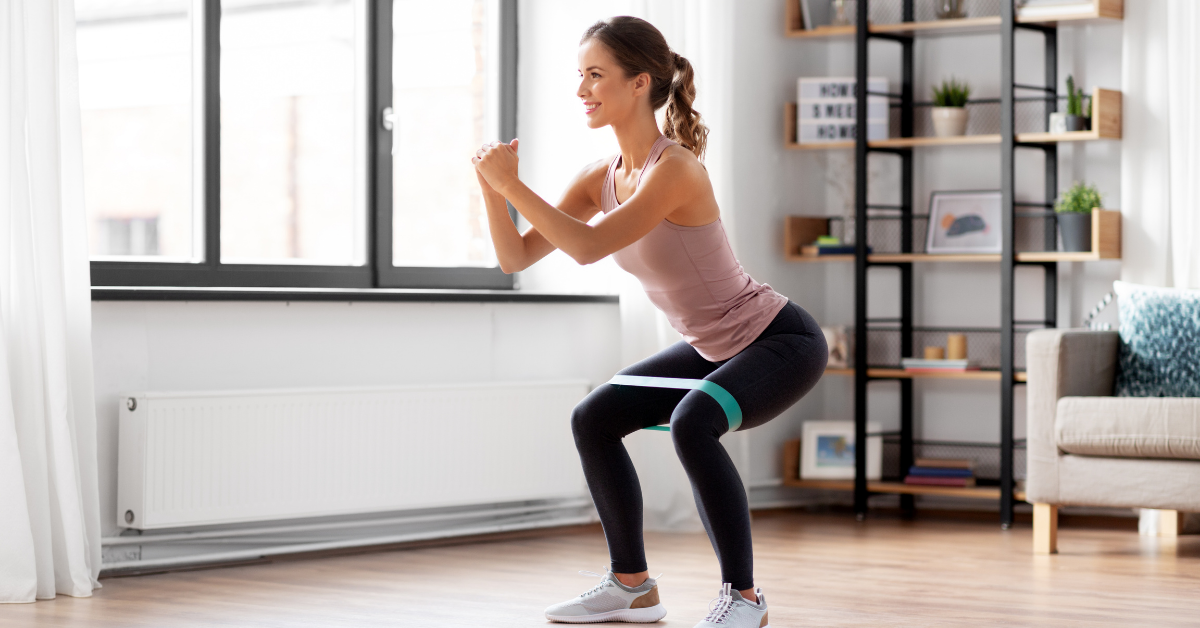The squat is a dynamic workout for strengthening muscles of the lower body. If you add a resistance band in squat, that’s the cherry on top. For resistance bands there adds some extra resistance to activate and strengthen your glutes and legs. Just add a resistance band while doing typical squats.
If you already know the basic squats, then let’s learn how to perform squats using resistance bands? Using a resistance band in any exercise adds more spice to the movements and your muscles feel more challenging to move.
When you get normal results from typical squats, trust me you’ll get the ultimate and utmost desired result from using a resistance band. Moreover, it’s an easier option to use a resistance band than holding and lifting heavy dumbbells while doing squats. It puts less pressure on joints and gives the best benefit.
Today we’ll talk about versatile squats, the benefits of squatting using resistance bands, and other related tips. So, buckle up and please read the full article for a better understanding.
Advantages of Resistance Band Squat
A resistance band is affordable, portable, and a huge game-changer. Plus, if you pass a resistance band in your squat, there’ll be drastic benefits you’ll gain. Those are described below-
1. Strengthen Your Glutes
Squat works for the whole lower region of your body. You may find that your muscles aren’t activating by normal squats or holding dumbbells for doing squats is also difficult for you. Then, if you grab the resistance band it’ll give you a more efficient result with less burden.
2. Strengthen Your Leg Muscles
Your quadriceps, hamstrings and calves also work hard for doing squats. The squat is a type of strength training that helps to tone your muscles and keep them in good condition. Plus, doing squats with a resistance band is less painful and stressful. The leg muscles work when you push back on your heel to get up on your feet straight.
3. Adds Versatility In Your Regular Workout
Most people tend to jump in weight exercises if they want to build or improve their strength. But, the resistance band gives you the best and huge variety of exercises that can effectively help you. You can control the resistance by adding or losing more bands if needed. There is a freestyle of creating new positions and motions.
4. Less Injury Risk
Many of us use dumbbells or heavyweights while doing squats for more challenging activities. It puts heavy pressure on your knee joints, makes you exhausted easily and you’ll feel stressed after a couple of reps.
Plus, extra weight can hurt your joints and make your muscles extremely sore which isn’t good. But, using a resistance band is putting zero pressure on joints and getting the utmost benefits from it. It improves ligaments, bones and strengthens the muscles.
5. Improves Bone Density
When you squat, you’ve to push your heel back to get up in the position. Plus, adding a resistance band puts more work to push against the ground with your feet. So, simply it improves your bone density and gives you stronger bones. It boosts density in your lower body bones and spine.
6. Burns Calories Faster
A strength-improving workout like squats builds your muscles and improves your health with the body. So, if I squat daily properly it burns 100 calories for 10 minutes. It also depends on how good and proper your posture is.
7. Strengthen Your Core
Squats need your core to get in a balanced position. So, while doing squats your core balance improves, your back pain vanishes and your posture becomes more proper. Regular movements like standing, sitting, walking, or bending feels easier.
How to Choose a Proper Resistance Band for Squats?

The elasticity of your resistance band will depend on your fitness goal. The resistance band comes in Light, Extra-light, Medium, Heavy, and Extra-heavy elasticity levels. You may choose bands that offer more or less resistance.
Most of the bands come in a resistance load of 2.3-68kg(5-150pounds). It’s important to get a resistance band that provides you with more challenging resistance. But, don’t cross your limit of resistance and see if you can hold the position properly. Based on that, add or less the bands.
Resistance bands mainly come in a package where you can find many elasticity levels perfect for you. It’s more affordable and easy to find.
How to Perform Squats Using Resistance Bands?

With a single resistance band, you can do a full-body workout. Yet, we’ll only discuss squats. So, I’ve elaborated on some of the best and most efficient squat positions using resistance bands. Here we go-
Targeted Muscles For All Squats
- Gluteus Maximus, Minimus and mediums(Full booty area)
- Hamstrings(Back Thigh)
- Quadriceps(Front Thigh)
- Calves
1. Classic Banded Squat
This is a normal basic squat adding a resistance band. Let’s see how you’ll do this new challenge-
Process
- Take a loop resistance band and wrap it around your thigh just above the knees.
- Stand on your feet shoulder-width apart, feet flat on the floor, toes pointed outwards, hand clasped forward.
- Now, slowly bend into a 90° angle squat position until your thigh is parallel to the floor. Keep the tension in the loop. Pause in this position for 2-3 seconds.
- Return to the starting position slowly. Continue this for 8-12 reps.
2. Banded Sumo Squat
This exercise is well-known for growing booty muscles. It may seem like classic squats, but it targets more glute muscles. Here’s how you do it-
Process
- Wrap a loop/mini loop resistance band just above your knees.
- Stand in a slightly hip-width apart position and your toes will be pointed outwards at 45°. Back straight and hand in front extended forward.
- Slowly lower your hips and bend your knees into a squat position. Hold this position for a couple of seconds.
- Slowly push your feet against the floor and get into the starting position.
- Continue this for 10 reps.
3. Banded Lateral Leg Raise Squat
This is a bombing exercise. It focuses on both glutes and legs. Here’s the process-
Process
- Wrap the resistance band around your thigh(for easier posture) or ankle(for tough posture).
- Stand in a hip-width apart position, back straight, hand in front or on hips.
- Now, bend in the squat position, knees 90° angle. While pushing up with heels from the ground, lift your right leg to the right side until you feel the tension in the band.
- Slowly get up into the previous position and again squat. This time lift your left leg while getting up.
- Like, this switches each side and continues this 8-12 reps.
4. Anchored Squat
You can perform this exercise if you have a long loop resistance band. It seems tough but it’s extremely effective. Here’s how it’s done-
Process
- Grab a long looped band and tie it with any sturdy point like a door frame, bench, pole, or any doorknob. The height should be around your hip/waist. 4 feet above the ground.
- Now, step into the band and have it around your hips. Step forward until you feel the tension in both feet and your waist.
- Slowly, get into the squat position, bending your knee to 90°. You’ll feel like the band is pulling back your pelvis and that’s the challenge. You’ve to keep your position firm and steady.
- Without pulling backward, hold the position for 2-3 seconds.
- No, get up slowly into the previous position. Continue this for 8 reps.
5. Banded Squat with Overhead Arm Extensions
This squat not only tones the lower region muscles but also works on toning the biceps, triceps, and hand. Here’s the process-
Process
- Take a big loop resistance band and place it under your heels.
- Stand in a position your feet will be shoulder-width apart and feet flat on the floor at a slight outward angle.
- Now, pull the other side of the resistance band from your heel and lift it to your chest level. Keep your elbows beside your rib cage and keep a tight grip on the band. Palm upward direction.
- Get into the squat position, as usual, hips pushing back and bending knees to 90°. While getting back in position, push your hand straight upward and extend your hand completely stretching the band.
- Return into previous position standing, tucking elbows beside rib cage.
- Continue this process for 8-12 reps.
Well, the given 5 ways should help you understand everything. However, you can still watch a related video if you want – SQUAT with Resistance Bands
Safety Precautions
In this segment, some safety tips are given which you should maintain to prevent any injuries. Here we go-
- While getting back into a standing position from squat, stand slowly. Don’t rush, because the tension in the muscles should build-up by holding the position for a few seconds.
- Get in the lower position as much as you’re flexible and comfortable.
- Keep your eyes forward and hands in front or clasped.
- Any posture you’re doing, try to get the best and proper form.
- Engage your core while keeping the right postures and balance.
FAQs
Does banded squat work?
Squat with a resistance band activates the glutes, hamstring, and quadriceps muscles. By pushing your hips and leg from the ground with your heels, it fires up the muscles. Not only that, but it also improves the core.
What is a banded squat good for?
The banded squat is good for lower body exercises. Like, glutes or leg muscles. Adding a resistance band to your normal squat routine adds extra resistance and challenge to movements. It maintains the balance and stabilizes the core.
How long does it take to see the result of the resistance band squat?
The more squats, the faster the result. If you follow a proper routine like 3 sets of 12 reps squat with resistance band 3 times in a week. You should be able to see the result within 2-3 weeks.
Final Verdict
So, now you have learned how to perform squats with resistance bands. Doing squats with a resistance band is a game-changer. Adding extra resistance and creating more tension, the muscles get completely activated. It builds your glutes and leg muscles most effectively and efficiently.
You should start with a less resistance band, and then increase the level. Resistance bands are affordable and portable, so they’re very convenient to use. However, talk to your trainer before adding the reps and sets of resistance band squats to your exercise routine. Good luck!

